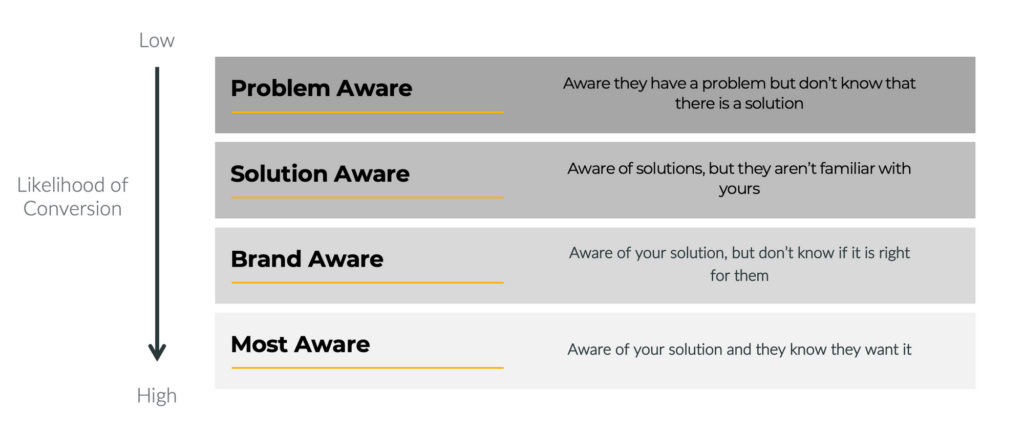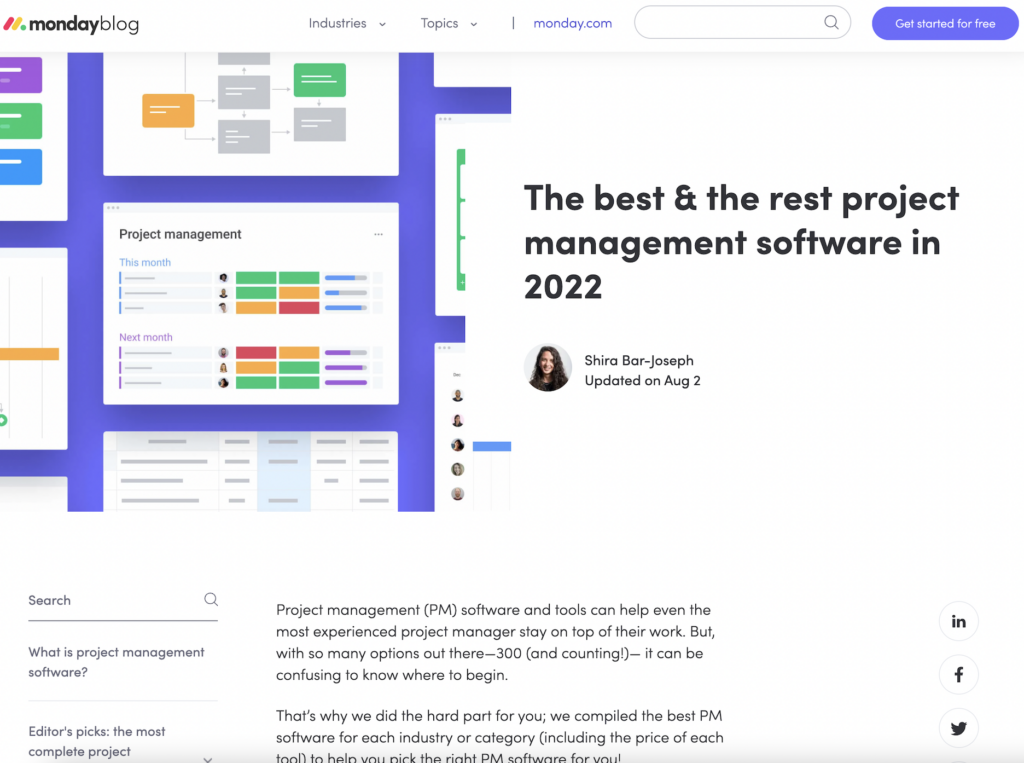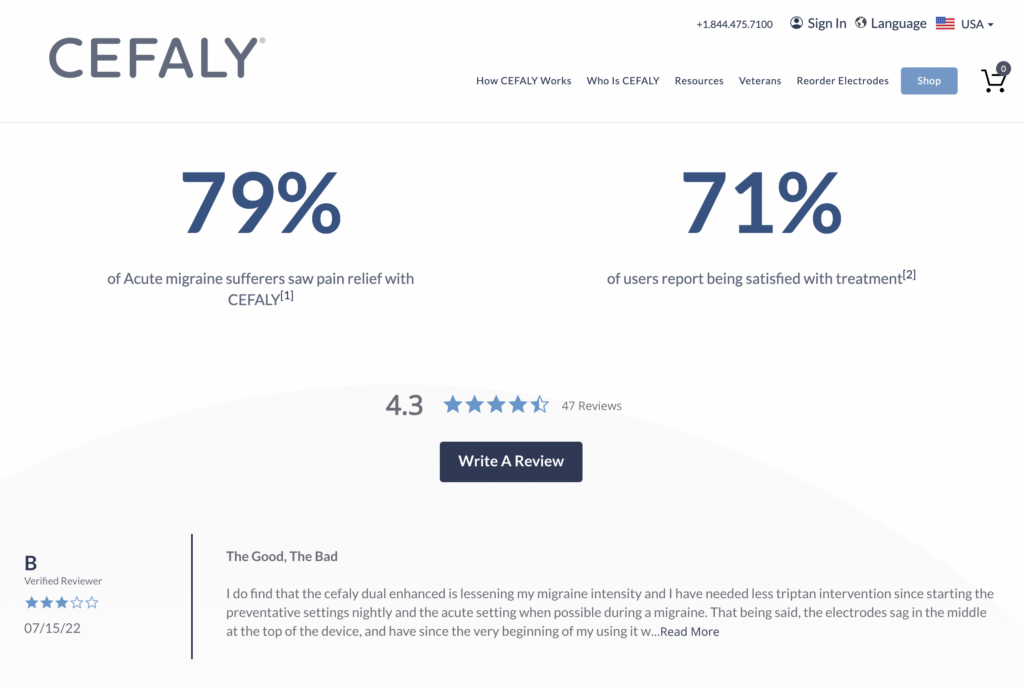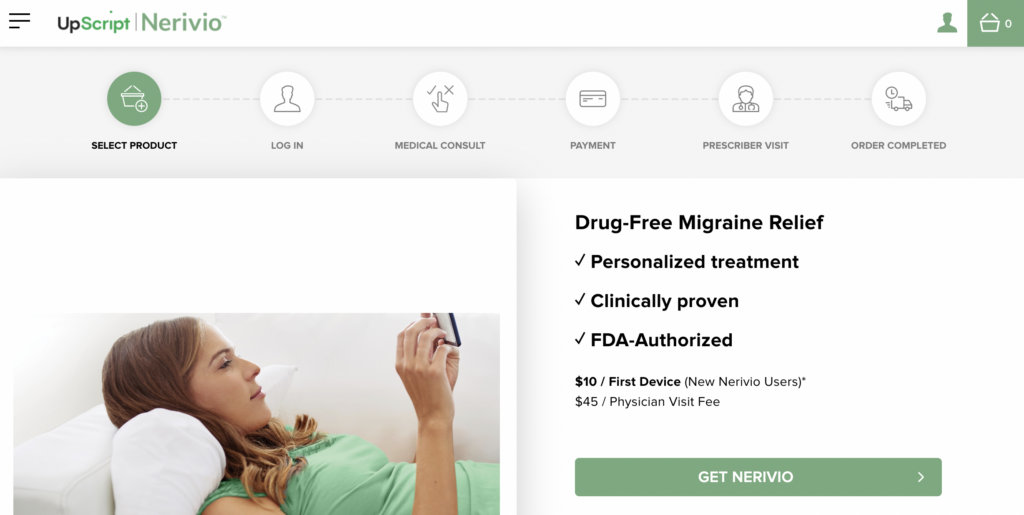
How to Build an Awareness-Based Content Strategy Framework
If you’ve invested heavily in SEO and content marketing, you’re likely (hopefully) asking variations on the same question we’ve asked ourselves at Wheelhouse: How do we generate business through content?
For years you’ve heard “content is king” and seen case study after case study of large brands transforming and disrupting their verticals through epic content marketing initiatives.
But here’s the secret: these successful content strategies don’t just work because they’re big and costly. They work because they’re built on a foundational understanding of the customer and their awareness journey from initial problem to solution research and, ultimately, conversion.
And the best part: all of this can be yours!
- Why use an awareness framework for content strategy?
- What is an intent-based awareness framework?
- Defining awareness levels
- How do we identify user awareness and intent?
- How an awareness framework can focus your content strategy
- How you can get started with an intent-based awareness framework
Why use an awareness framework for content strategy?
A user awareness framework such as the one we’ll outline here can transform and focus your content strategy, regardless of your budget. It centralizes and prioritizes the customer — and the customer’s frame of mind — rather than channels, platforms or tools.
Frameworks bust silos and provide teams across your organization with a shared language and paradigm that fosters collaboration and multi-channel strategy development.
An awareness-based content strategy framework also allows you to develop more granular KPIs that hold content groups to varying (and realistic) standards. No more flinching at that 0.02% blog post conversion rate! An article published to attract a “problem aware” audience will have a different metric for success than a landing page intending to convert a brand-aware user.
If you’ll pardon a rather cringe analogy: Your website is a stage, each page a part to play — and your framework is the script.
What is an intent-based awareness framework?
At Wheelhouse we leverage a framework that combines two critical aspects of a user’s state of mind: their awareness level and their underlying intent. Let’s define each of those aspects in turn:
User Awareness: How aware is a user of your brand and your solution — and even the problem itself? A user’s awareness level has big implications for the topics we write, the length and depth of our content, and the action we expect a user to take after engaging with our site.
Plus, when you categorize your existing content and performance by awareness level, it’s a great way to find the low-hanging fruit for optimization (more on this later).
User intent: What is your user trying to do? Are they researching a problem? Are they comparing solutions in the marketplace? Are they looking to assess the quality of your specific solution or brand? Or maybe they’ve made their decision and they’re simply looking to purchase or submit a lead (with as little friction as possible).
In SEO we’re trained to interpret user intent and ensure our content is effectively meeting that intent. And this mapping is a critical layer of our framework – meet your user’s underlying intent, and leave them with a deeper awareness (and admiration) of your solution and brand.
Defining awareness levels
We typically work with four or five awareness levels, depending on the situation. Problem aware, solution aware, brand aware, and most aware. At times we’ve also found a pre-aware stage (i.e. users not yet familiar with the problem) to be useful as well.

So let’s break these levels down, and consider the role content strategy has to play in speaking to users at these various stages of awareness:
Problem aware
Users who are “problem aware” have… you guessed it, a problem. Put another way, they have a challenge they are trying to solve — an outcome they are trying to achieve. Problem-aware users are on the hunt for solutions — and helpful, authoritative content is usually the starting point. SEO typically has a significant role at this stage as users take to Google to find answers. Reddit and YouTube are other popular sources that attract problem-aware users.
Having a deep understanding of the types of problems that your brand solves – and crafting content that attracts these solution seekers is a great starting point for your strategy and an important first touchpoint early in their journey.

At the same time, the problem-aware audience is massive — and can provide diminishing returns when it’s the sole focus of your content strategy, as is too often the case. Sites that exclusively target problem-aware users typically have a lot of traffic and struggle to turn that large audience into actual business. Which leads us to…
Solution aware
Solution-aware users are a step deeper in their journey. They are aware of solutions in the marketplace (maybe even direct competitors), but they are not yet aware of yours. At this stage, we see lower volumes of users but they are much more likely to convert.
You’ll get in front of solution-aware users in one of two ways: 1) you effectively introduced your solution to users that came into your site problem aware or 2) solution-aware users came to your site directly from Google or other sources. In this latter camp, users are likely landing on your home page, or a product or solution page that’s optimized for solution-aware keywords.
This is a very valuable audience that is in a highly receptive frame of mind — but they are just as receptive to your direct competition or even alternate solutions. This is your chance to speak their language and make the case for your solution over the field.

Brand aware
Brand aware users are familiar with your solution, but not yet convinced it’s right for them. This is, without a doubt, the most overlooked awareness level in SEO and content strategy. Too often SEOs ignore “brand” traffic under the mistaken assumption that users searching for your brand are already in the cart, so to speak. And while brand-aware users are much more likely to convert than problem- or solution-aware users, it’s critical to create brand content that’s responsive to the objections, doubts, and questions surrounding your brand in search and other channels.
Ignore brand-aware users at your own peril — if you don’t control the narrative and participate in the conversation around your brand, others will.

Most aware
Most-aware users are familiar with your brand and are ready to convert. And while these users do not necessarily require further convincing, it’s still critical we provide a clear, frictionless conversion experience. Content at this stage should outline the conversion process and set clear expectations for what’s coming.

How do we identify user awareness and intent?
Identifying user awareness and intent is part science, part art — and it requires testing and refinement over time. In some cases, users make it very easy for us and in other cases it’s unknowable (think broad Facebook audiences). Let’s start with the easy: keywords.
Keywords hit two birds with one stone – in most cases we can infer both awareness and intent with a single keyword. By way of example, let’s look at a set of keywords around migraines and migraine treatments:
| Keywords | Awareness Level | User Intent |
|---|---|---|
| migraine symptoms | Problem Aware | Seeking authoritative information outlining common symptoms of migraines. |
| how to treat migraines | Problem Aware | Seeking information about migraine treatment solutions. |
| medications for migraines | Solution Aware | Seeking to learn about, and potentially purchase, medications for migraines. |
| migraine doctor online | Solution Aware | Seeking to schedule an online appointment with a migraine specialist. |
| migraine device | Solution Aware | Seeking to learn about, and potentially purchase, a migraine device. |
| cefaly reviews | Brand Aware | Seeking reviews and testimonials about Cefaly migraine devices. |
| is cefaly safe | Brand Aware | Seeking information about whether Cefaly migraine devices are safe to use. |
| cefaly vs. nerivio | Brand Aware | Seeking an objective review comparing Cefaly and Nerivio devices. |
| cefaly free trial | Most Aware | Seeking to sign up for a free trial for the Cefaly migraine device. |
| how to order cefaly in the us | Most Aware | Seeking to purchase a Cefaly device. |
It’s not always this clean, but it’s a great example of how grouping keywords can illuminate a path forward on content strategy. Once you’ve identified your the underlying intent and the awareness level of the audience you’re attracting to your site, your content has its marching orders:
- Meet the core underlying intent (better than your competition)
- Speak to the awareness level of your users, and leave them with a deeper awareness of their problem, your solution, or your brand.
You may be able to move users from problem aware to conversion in a single session — it will depend on the cost of your solution and the typical length of your customer journey. For those who will need to re-engage with users who don’t convert, this framework allows you to segment your remarketing audiences by awareness level (based on the page(s) visited before exiting your site) and tailor your copy, creative and landing pages.
How an awareness framework can focus your content strategy
What I’ve outlined here is a holistic framework. If you felt inclined you could map each piece of content on your entire website to this framework – and even develop an editorial calendar to fill each and every gap. And while it can be advantageous to think holistically, we recommend starting from business value and working backwards. Start by answering a few basic questions:
- Where are we strongest in this awareness framework?
- Where are the gaps?
- Should we aim for comprehensive coverage of problem-aware topics or focus on a specific niche within this audience?
- How are we ranking vs. competitors for solution-aware keywords?
- Have we ignored brand-aware users?
- What does brand keyword research tell us about customer objections, questions and doubts?
- Are we effectively countering those brand objections and answering questions — or are we ceding that ground to competitors and third-party sites?
- How are our various channels (SEO, PPC, paid social) targeting these awareness levels?
- Do we want specific channels handling certain awareness levels?
- Does our content effectively move users to deeper stages of awareness, or do users appear to get stuck (i.e. exit) at a specific level?
Answering these questions will show you where to start. And it might not be where you initially expected!
Since we’ve begun applying this awareness framework to our content strategy development process, we’ve been drawn again and again to the brand-aware audience. As I mentioned above, it’s an audience often ignored in the SEO world, where non-brand search visibility is king. But when viewed through this framework we see something different: users who are already familiar with your brand and are much more likely to convert, but are not yet convinced.
Researching why this audience is not yet convinced and creating content to get them over the finish line has significant business value and will almost certainly be worth the time and investment.


